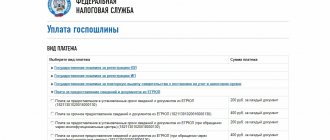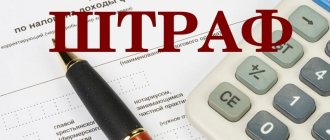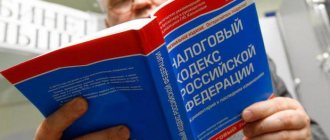Legislative framework and latest news for 2019
Excise taxes are components of the cost of goods that are in high demand among citizens, but do not fall into the category of essential products.
In order to increase budget revenues, the state uses a system of excise taxes. This allows you to control the sales volume of certain products, for example, alcohol, tobacco, fuel. Excise tax rates are reviewed and recalculated annually.
Current tariffs are established in the Tax Code of the Russian Federation, in particular in Art. 193. Changes are regularly made to it, which occurs through the adoption of the next federal law. For 2019, the rates are set within the framework of Federal Law No. 301 of August 3, 2018. From January 1, certain changes were made to the norms of the Tax Code of the Russian Federation, in accordance with which there was an increase in excise tax rates.
The percentage by which the increase occurred is 10.01%, which is 1890 rubles. for 1000 pieces . It is worth noting 14.5% of the estimated value, determined in accordance with the maximum retail value. Starting from January 1, 2020, there was an increase in the excise tax rate on the following types of tobacco :
- smoking;
- tobacco;
- tubular;
- chewing;
- hookah;
- snuff;
- sucking.
For 1 kg the average cost reached 3050 rubles. There are also varieties of tobacco products for which the increase will be even greater:
- tobacco for cigars (10.11%), the cost was 207 rubles. a piece;
- for bidis, cigarillos, kretek (10%), therefore, the price of one unit was 2938 rubles;
- heating tobacco (10%) – 5808 rub. for 1 kg;
- electronic systems and mechanisms (9.09%), which is equivalent to 48 rubles. for a unit;
- liquids intended for use within these systems (9.09%) – 12 rubles. per milliliter
In addition, along with an increase in rates, there may be an increase in the cost of tobacco products themselves in the retail segment.
At the same time, an increase in excise taxes is far from the only reason for this phenomenon. Since 2020, the VAT rate has been increased to 20%. This will affect the final cost of the product and its components (film, filters, foil). The next rate increase will occur on January 1, 2020.
Rates in the table and payment terms
Data on excise tax rates on tobacco products for 2020 and 2020 are presented in the summary table.
| Product type | Value for 2020, rubles, in brackets – the quantity of goods for which excise duty is paid | Value for 2020, rubles, in brackets – the quantity of goods for which excise duty is paid |
| Tobacco that is ready to use | 2772 (per 1 kg) | 3050 (per 1 kg) |
| Cigars | 188 (per unit) | 207 (per unit) |
| Cigarettes and other types of cigarette-type products | Until July 2020 – 1562 rubles. (for 1000 pcs.) Until the end of 2020 – 1718 rubles. (for 1000 pcs.) | 1890 rub. (per 1000 pcs.), and 14.5% is charged on the estimated cost of commodity items |
| Cigarillos | 2761 (per 1000 pcs.) | 2938 (per 1000 pcs.) |
| Heating tobacco | 5280 (per kg.) | 5808 (per kg.) |
| Electronic smoking devices | 44 (per unit) | 48 (per unit) |
| Special liquids used to fill an electronic cigarette | 11 (per ml.) | 12 (per ml.) |
Payment of this fee is carried out on the basis of the deadlines established by law, which is prescribed in the norms of Art. 204 of the Tax Code of the Russian Federation. In Art. 182 of the Tax Code of the Russian Federation states that an excisable operation is the import of tobacco and products that contain it into the territory of Russia.
Import deadlines are until the 25th of the month following the reporting period. In this case, no advance payment is required. The date of the excise transaction is determined on the basis of the acceptance certificate, according to which the goods are supplied to retail for the purpose of subsequent sale.
How to calculate excise tax on tobacco with examples
Determining the amount of excise tax on tobacco products is quite simple. The following formula is used for this:
Excise tax = Quantity of excisable goods * Tax rate (fixed)
For cigarettes and cigarettes, a different formula applies, suggesting the use of a combined rate:
Excise tax = Quantity of goods subject to excise duty * Fixed rate + 14.5% * Maximum retail value
I purchased 3 kilograms of tobacco. The payment is calculated using a fixed rate, which is equal to 2520 units * 3 kilograms and amounts to 7560.
For enterprises operating with certain types of products, special certificates of completion of registration procedures are used. Information about this is contained in paragraphs 2-5 of Art. 179 of the Tax Code of the Russian Federation. Enterprises that carry out the following types of activities :
- production of ethyl alcohol (denatured), dispensing occurs only if appropriate equipment is available;
- straight-run gasoline (confirmation of the right to work with this product is required);
- benzene, paraxylene;
- medium distillates (in the presence of sea vessels).
These laws do not apply to tobacco products.
In 2021, excise taxes on tobacco may be increased to 20% according to the proposal of the Ministry of Finance. In this case, prices per pack will increase by an average of 20 rubles, and many smokers will begin to look for a replacement in the form of cheap brands or counterfeit products. A sharp increase in excise taxes will lead to a deterioration in the financial situation of Russian smokers, and possibly to a deterioration in health.
The Ministry of Finance proposed to compensate for budget expenses for COVID-19 with increased excise taxes on tobacco products in 2021. It is planned to immediately raise the tax by 20%, which is five times more than the usual increase of 4%. On average, a pack will cost 20 rubles more, and the average market price will rise to 140 rubles per pack. Thus, this measure will primarily hit citizens of the country - smokers, who, along with other Russians, have suffered from the pandemic crisis. Let's figure out what kind of excise tax this is and why it is smoked.
How much does the state receive from excise taxes on tobacco?
For the entire 2020, the Ministry of Finance plans to collect about 600 billion rubles from tobacco excise taxes.
According to the Electronic Budget system, excise taxes on tobacco products produced in Russia brought 372 billion rubles to the budget from the beginning of 2020 to August. By the end of the year, the amount will increase to approximately 586.5 billion rubles. Excise taxes on heated tobacco produced in Russia amounted to 16.7 billion rubles. Meanwhile, indirect taxes on tobacco, electronic nicotine delivery systems and nicotine-containing liquids brought from abroad amounted to about 2 billion rubles.
Expert opinion
Excise tax is the main determinant of the price of tobacco products, experts say. Vasily Gruzdev, director of government relations at the Russian office of Japan Tobacco International, believes that with an increase in excise taxes by 20%, the average cost of cigarettes will rise to 140 rubles. Oleg Barvin, head of government relations at the Russian office of British American Tobacco, agrees with him and assures that the price for a pack of cigarettes will increase by 20 rubles on average.
How critical is a price increase of 20 rubles?
To understand how critical such an increase in excise taxes is, it is enough to calculate how much money smokers spend on cigarettes per month now. To do this, a Sib.fm correspondent conducted a survey among Novosibirsk smokers. The study identified three price categories: cheap cigarettes, middle-class tobacco and expensive cigarettes. The survey also showed that the majority of respondents smoke about a pack of cigarettes a day.
Among those surveyed, pensioners prefer to buy the cheapest cigarettes. The average price of a pack is 75 rubles. Thus, monthly spending on tobacco is about 2,250 rubles. For a pensioner’s budget, such an amount can be significant. In the event of a sharp increase in excise taxes, spending on “cheap” brands of cigarettes will increase to 2,850 rubles.
The majority of respondents buy cigarettes in the middle price category - about 110 rubles. Thus, monthly spending on tobacco amounts to 3,300 rubles. After the increase, they can reach 3,900 rubles.
Expensive brands of cigarettes are bought by a small number of smokers. The average price per pack is 150 rubles. In this case, they spend 4,500 rubles a month on tobacco. An increase in excise taxes by 20% will lead to expenses of 5,400 rubles.
“This is the most effective measure in the fight against smoking”
At the beginning of August, a mini-interview with the chief therapist of the ministry, Oksana Drapkina, appeared on the Ministry of Health website. She considers increasing excise taxes on tobacco an effective measure in the fight against smoking.
“WHO recommendations and international experience determine that tax measures are the most effective in the fight against tobacco. Therefore, it is advisable to discuss the issue of systematically increasing the excise tax on tobacco and other nicotine-containing products to the level recommended by WHO,” says Drapkina.
Let us recall that WHO previously called for an increase in excise taxes on tobacco to 70% of the cost of a pack of the best-selling brand of cigarettes, with subsequent annual increases.
Smokers have something to say
All smokers surveyed knew about a possible increase in excise taxes to 20%. There was not a single one among them who agreed with the decision of the Ministry of Finance. In addition, respondents are confident that rising prices will not reduce the number of smokers.
“As for me, expenses related to the pandemic should be collected from the budget of all citizens, and not from the smoking segment of the population. I think that any product should be worth the money, yes, not the cost price, but still the price should remain adequate. I consider artificial price increases to be absolutely absurd,” says Vyacheslav.
The Novosibirsk resident also notes that it is wrong to cover the country’s budget expenses with smokers’ money.
“Somehow it happened that people who smoke are treated so “specially” that expenses related to the pandemic will be paid from their wallets. Raising prices will not change the statistics of smokers in any way; people will either pay inflated prices or switch to more affordable cigarettes.”
Alexander agrees with him and claims that it will not be difficult for smokers to find an alternative in the form of cheap cigarettes.
“I have an extremely negative attitude towards this decision. In general, seizing funds through excise tax is despicable. The state got us hooked on these drugs. Since childhood, I remember how this rubbish was advertised on TV. And, of course, no one will quit smoking because of such laws; they will simply switch to even more disgusting surrogates or buy counterfeit goods from Kazakhstan, which are not burdened with a strict excise tax,” Alexander was indignant.
The position of smokers is understandable and can be formulated as follows: “Why are we worse than other Russians and why will the state’s problems be solved with our money?”
Sellers in tobacco shops also took part in the survey. According to them, smokers have long been switching to cheaper brands of cigarettes.
“Buyers come for their usual cigarettes and expect the same price as yesterday. When they find out that a pack has gone up in price, they choose what’s cheaper,” says saleswoman Anna. “Old people are already just taking packs for 60-80 rubles, because they simply don’t have the money to spend 100-120 rubles every day.”
At the same time, sellers note that middle-aged people and young people are not stopped by rising prices and they still buy familiar brands.
“They come knowing that a pack of them costs, for example, 120 rubles. They shell out money, but it turns out that the price has increased to 130 rubles. They complain, of course, but they reach into their wallet for a tenner, what can you do,” says Svetlana.
Further more
It is clear that price increases will greatly affect the spending of smokers. How much of an impact this will have on the number of Russians who smoke remains questionable, because finding an alternative to increasingly expensive cigarettes is not difficult. It’s just unknown how high-quality the cheap replacement will be and how it will affect the health of smokers.
So far, everything is heading towards the fact that excise taxes will nevertheless be increased. The document of the Ministry of Finance has already been approved by the commission on legislative activities. It will then be considered at a government meeting.
Responsibility for sales without excise duty
Only excise tobacco products can be sold on the territory of the Russian Federation. If the excise tax on it is not paid, the goods are considered smuggled, and the seller is brought to administrative or criminal liability.
Administrative
In Art. 15.12 of the Code of Administrative Offenses of the Russian Federation states that administrative liability is imposed on citizens who have made a sale in a small volume. Sanctions are presented in the following amounts:
- 2000 – 4000 rub. + seizure of items that resulted in the commission of an offense (for citizens);
- 5000 – 10,000 rub. + confiscation of commodity items (in relation to officials);
- 50,000 – 300,000 rub. + withdrawal of products (in relation to organizations).
The circulation of cigarettes without paying excise duty implies the accrual of the following sanctions:
- 4000 – 5000 rub. (for ordinary citizens);
- 10,000 – 15,000 rub. (for officials);
- 200,000 – 300,000 rub. (for organizations).
In any case, regardless of the scale of the violation and the status of the person who committed it, the contraband goods will be withdrawn from circulation.
Criminal
According to Art. 171.1 of the Criminal Code of the Russian Federation, the sale of unlabeled tobacco products on the territory of the Russian Federation is prohibited. Failure to comply with this legal norm, i.e., selling products on which excise duty has not been paid, involves the imposition of the following types of penalties:
- a fine of 400,000 – 800,000 rubles;
- forced labor of a social nature for up to 5 years;
- a fine in the amount of income received for 1-3 years;
- 1,000,000 rub. + imprisonment for a term of 6 years.
In case of violation of the current legislation in an amount that is particularly large, the last option of punishment is imposed, i.e. a fine of 1 million rubles and imprisonment for up to 6 years.
If a citizen has committed a violation in the amount of 100,000 rubles or more, he faces the following types of punishment:
- fine in the amount of up to 500,000 rubles. (or in the amount of income received over the last two years);
- sent to social work for 3 years;
- a fine of up to 120,000 rubles. + imprisonment for 3 years.
Specific penalties are determined in accordance with the volume of products that were seized. A large size requires an amount of 100,000 rubles, an especially large size – from 1,000,000 rubles.
Related materials
00:03 — August 11, 2018
Mischief managed
The family of a simple carpenter conquered the whole world.
Everyone dreamed about their designers. Even the head of the republic, Alexander Lukashenko, spoke about the export of cheap Belarusian cigarettes. “We are talking about one of the significant sources of budget replenishment. Therefore, if there is demand, we need to sell tobacco products. We won't sell, others will. Markets will be busy,” he said at a meeting on changes to work in the production and sale of tobacco products late last year.
In Armenia, the main share of cigarettes entering Russia illegally comes from the products of the local Grand Tabak plant (76 percent of supplies). The rest are cigarettes from transnational companies. It is worth noting that almost all Armenian smuggling has national excise stamps. The situation is similar in Kazakhstan, where only 0.1 percent of cigarettes produced in the country and brought to Russia do not have any excise taxes at all. Kyrgyz manufacturers are practically not represented here, but there is reason to believe that the country has become a transit point for foreign manufacturers, for example Serbian ones.
To maintain a leading position in the illegal market, Belarusians will have to make more and more efforts. Over the past two years, they have been squeezed by fraternal Serbia and the United Arab Emirates. According to Kantar TNS, their combined share has more than doubled - from 0.7 percent of the total market in the 1st quarter of 2020 to 1.9 percent, as of spring 2020. Logistics for these suppliers turned out to be quite tortuous. Their products come to Russia mainly through Kyrgyzstan and Kazakhstan. A market source notes that usually large consignments enter Russia as transit cargo, but along the way they disappear and end up on the shelves of markets and small shops.
Photo: Alexey Kudenko / RIA Novosti
For example, according to the Tobacco Industry Development Council, the small Serbian factory MONUS was a little-known supplier of FAST cigarettes to duty-free stores. Including those located in Kyrgyzstan. However, after Kyrgyzstan joined the EAEU, things took a sharp turn for the Serbian tobacco producers. In just over two years, the Serbian factory has become the second largest foreign supplier of illegal products to Russia after Grodno. Now they account for about eight percent of all illegal cigarette traffic in our market.
Serbian products are best represented in cities such as Omsk, Novosibirsk, Rubtsovsk, Novokuznetsk, Biysk, where FAST cigarettes can be purchased at a price of 40-45 rubles per pack. Specifically in Omsk, as reported by the Council for the Development of the Tobacco Industry, every third pack of cigarettes purchased is FAST. In total, according to expert estimates, up to 5,000 boxes of Serbian cigarettes are sold there, or 2.5 million packs of cigarettes per month. This is 100 million rubles of income per month, or about 1.2 billion rubles per year. For the Russian budget, losses from the activities of Serbian entrepreneurs in just one city amount to 1.5 billion rubles per year.
Arab smuggling, on the contrary, began its march from the European part of Russia. For the first time, cigarettes produced by the Arab company Gulbahar Tobacco International (brands CAVALLO, MOND, MILANO and OSCAR), according to the Council for the Development of the Tobacco Industry, were found on sale in December 2020 at one of the points at the Apraksin Dvor food market in St. Petersburg. In less than a year, illegal Arab cigarettes have spread throughout the country.
Trading procedure
The trading procedure is determined by the standards of the current legislation and depends on a number of factors.
The cost of cigarettes in Russia and the size of the markup
The procedure for creating a trade markup for tobacco products is the same as for any other types of goods.
A distinctive feature is the accounting of the amount of excise tax. First, the amount of costs associated with the purchase, delivery of goods, payment of customs duties, storage, advertising, taxes is determined (this is the cost). a value added tax of 20% is added to it . After this, the amount of excise tax is added, which depends on the type of tobacco and its volume. At the last stage, the seller's expected profit is determined. The average markup is 50-100% .
Excise stamps
For the purpose of marking, it produces excise stamps. Their size is 44*20 mm, they contain the inscriptions “Russia”, “Excise stamp”.
For production, it is customary to use paper with a watermark, which contains 2 fibers. The production process uses at least 2 printing methods.
Why are cigarette prices rising?
This phenomenon can be explained by an increase in the cost of tobacco products and an increase in trade margins . In the first case, we are talking about rising prices for raw materials, transport services (due to rising prices for fuel and vehicle maintenance), storage, and advertising.
In the second situation, we are talking about an upward change in the amount of excise taxes and VAT (in 2020 there was an increase from 18% to 20%). All these factors influence the overall cost of tobacco products.
Cigarette production: legislative framework
A cigarette is considered to be a type of tobacco product made from cut tobacco and wrapped in special paper. The most common cigarettes are those with a filter (a special part, usually made of acetate fiber, designed to reduce the harmful effects of nicotine tar on the smoker’s body).
Cigarette production activities in Russia are regulated by the provisions of two regulatory documents:
- Federal Law “Technical Regulations on Tobacco Products”
- Technical Regulations of the Customs Union “Technical Regulations for Tobacco Products” (TR CU 035/2014)
These documents contain requirements for the raw materials used in the manufacture of cigarettes (component composition), for the content of harmful substances in cigarette smoke, for product labeling, as well as rules for applying information to packaging.
Important! Cigarettes cannot contain substances whose circulation is prohibited in the country.
Cigarettes must be marked with special excise stamps. They are issued by tax inspectorates to manufacturing enterprises on the basis of an application indicating the need for excise duty stamps. Such an application must be submitted in advance (no later than 4 months before the new quarter) and at the same time an advance payment of excise taxes must be made. It is necessary to keep records of purchased, used and destroyed stamps.
Cigarettes must be labeled according to the following rules:
- When gluing stamps, do not allow any unevenness or folds to occur.
- the central part of the brand and details should be clearly visible
- if the stamp breaks, its parts must be carefully connected
In the smoke of one produced cigarette, the tar content should not exceed 10 mg, the nicotine content - 1 mg, and the carbon monoxide (CO) content - 10 mg. The manufacturer of tobacco products is required to annually submit a report on the ingredients included in cigarettes in the prescribed form to the territorial executive authority.
For each minimum unit of packaging, that is, for each pack of cigarettes, it is necessary to include information with the name of the product and the manufacturer itself, and contact details of the organization authorized to accept claims. You also need to indicate the number of cigarettes in the pack, information about the presence of a filter and the content of tar, nicotine and CO, warning labels, and indicate the date of manufacture and the value of the maximum retail price.
Compliance of manufactured products with the requirements of regulations is confirmed by declaring tobacco products (the entire range at once or individual items). The declaration scheme is as follows: the manufacturer applies to an accredited certification center, provides product samples for laboratory testing and samples of consumer packaging to assess compliance with the requirements. If the products and packaging comply with the standards specified in the law, the center issues a declaration of compliance with safety requirements to the manufacturer.
If desired, the manufacturer can obtain an additional certificate for tobacco products. This document will no longer testify to the safety, but to the high quality of cigarettes.
It is quite obvious that the production of cigarettes at home is excluded. To start a cigarette business, an entrepreneur will need suitable premises, a set of modern equipment, qualified personnel and reliable suppliers of raw materials. To imagine the scale of production, it is worth considering the technology for making cigarettes.









